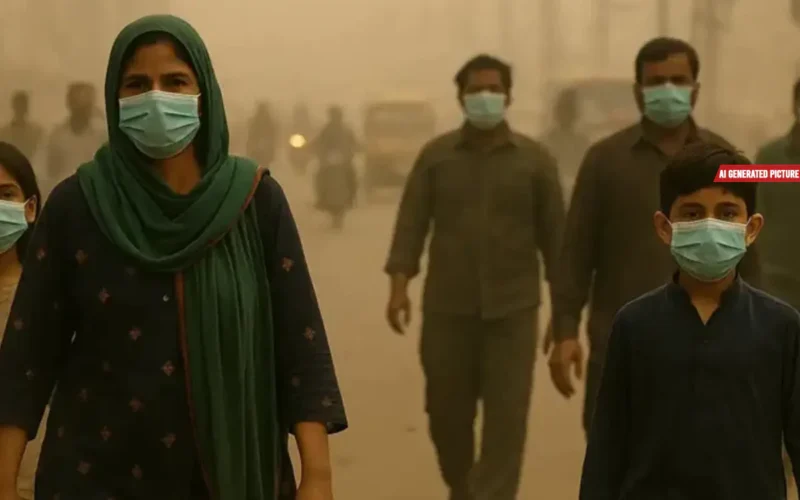Karachi’s air quality has worsened sharply, with several monitoring stations across the city recording PM2.5 concentrations well above safe limits, raising serious health concerns for residents.
Data from multiple air quality sensors in the city show pollution levels ranging from 101 to 184 µg/m³, categorizing the city’s air as “unhealthy” to “very unhealthy.”
Follow the Times of Karachi channel on WhatsApp
The highest pollution levels were recorded in Malir District (PM2.5: 184) and Gulshan District’s Gulistan-e-Johar (PM2.5: 182), followed closely by Jamshed Town, where readings from the Urban Resource Center and Urban Unit reached 170 and 162, respectively.
Even educational and research zones such as NED University (City and Main Campuses) and the University of Karachi reported unsafe air quality with PM2.5 levels between 131 and 167.
Environmental experts warn that these concentrations far exceed the World Health Organization’s recommended limit of 15 µg/m³, posing serious respiratory and cardiovascular risks.
They attribute the rise to vehicular emissions, industrial pollution, and construction dust.
Authorities have urged citizens to wear masks, avoid outdoor activities, and support measures aimed at reducing urban air pollution, as Karachi continues to struggle with one of the country’s most persistent environmental challenges.
READ: Karachi set for warm dry weather with cool nights ahead
How many categories are there to measure Air Quality?
AQI 0–50: Good
The air quality is considered excellent, with minimal or no risk to public health. There are no necessary precautions for the general population.
AQI 51–100: Moderate
Air quality is generally acceptable; however, there may be a slight health concern for a small number of individuals who are unusually sensitive to air pollution. Active children, adults, and people with respiratory conditions like asthma should consider limiting prolonged outdoor activity.
AQI 101–150: Unhealthy for Sensitive Groups
Sensitive individuals, such as those with asthma or other respiratory issues, may begin to experience health effects, although the general population is unlikely to be affected. It is advised that active children, adults, and those with respiratory conditions limit extended outdoor exertion.
Visit Times of Karachi website for the latest news-related content daily
AQI 151–200: Unhealthy
Health effects may begin to affect everyone, with sensitive groups potentially experiencing more serious symptoms. Active children and adults, and people with respiratory illnesses should avoid prolonged outdoor activity, while others—especially children—should reduce outdoor exertion.
AQI 201–300: Very Unhealthy
This range signals emergency-level health warnings. The entire population is more likely to experience adverse health effects. Those with respiratory conditions and active individuals should avoid all outdoor activity, while everyone else, particularly children, should limit time spent outdoors.
To stay informed about current Karachi Air Quality, visit TOK Weather Page
AQI 300+: Hazardous
Air quality is extremely poor, posing a serious risk to health for everyone. A health alert is in effect, and all outdoor exertion should be avoided by the entire population.










